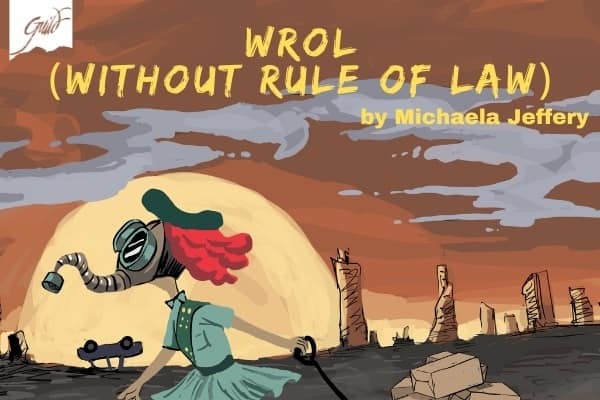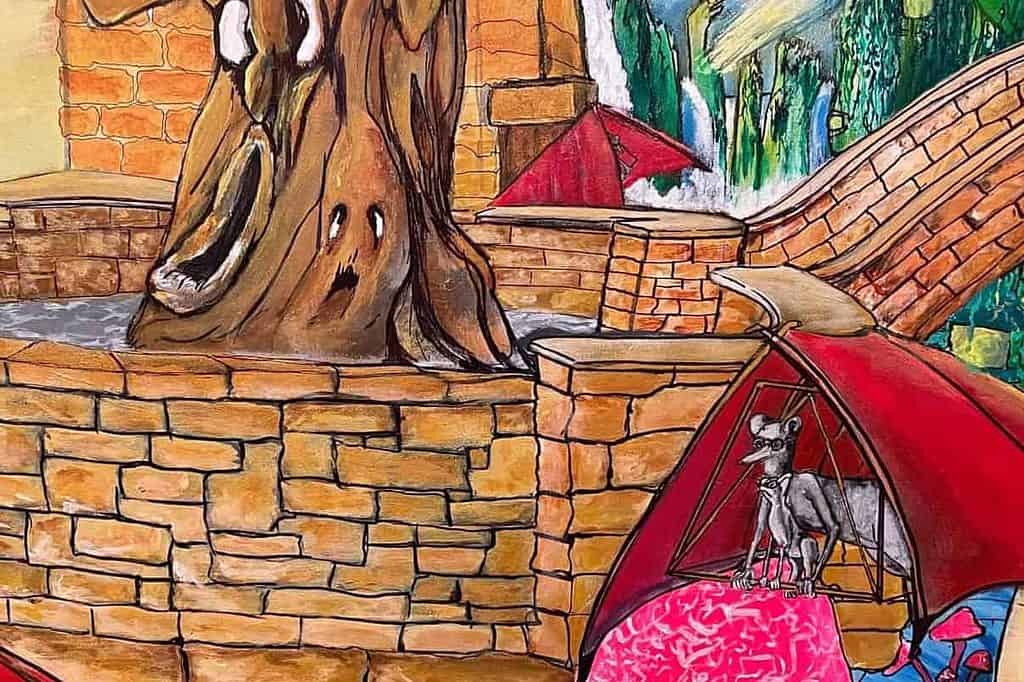Ruth Qualliarialik Nuilliak’s “Tundra” is the first thing you see of the show Nunavut’s Culture on Cloth at the Yukon Arts Centre.
It transfixed me.
The tundra is so hard to paint, with its patches of vegetation, its incredible close-up detail. Nuilliak has taken it down to an abstract gesture which evokes its complexity in the viewer’s imagination.
Nuilliak has covered a soft grey felt with branching stitches. Each stitch covers about one square centimetre of the cloth’s surface.
Some are a little smaller, some larger, but all the same pattern, the way plants of the same species, or parts of plants, share the same shape at different levels of scale.
She’s chosen thread in purple, red, pink, blue-grey, beige, brown, crimson and vermilion. She’s covered the space in a grid, but an organic grid. The way it breaks from the exactitude of a grid enacts the organic nature of what she’s trying to convey.
I can imagine her working, filling the available space with the growth of these stitches, in much the same way as the plants cover the available space on the ground.
That’s what I mean by the gesture. She’s taken the essential gesture of the plant growth and created a visual object that evokes it masterfully.
As you browse through the other works in the show, you can see how this shorthand for tundra, this stitch, is used by other Baker Lake textile artist, among many other techniques.
Most artists have only one piece in the show, but Victoria Mamnsualuak has two and Irene Avaalaaqiaq has three, all called “Spirit Transformation”.
Mamnsualuak’s works both use a grey background cloth with a border of black and white open-mouthed faces. I feel that I’m in the realm of story. But what is the story?
In “Golden Bears“, four golden bears stand symmetrically across the top. But a woman in a red parka with a basket is the largest, central figure. She ladles out something to a smaller person, perhaps a child, also in a red parka.
An almost prehensile braid form curls around her body and almost touches the child’s nose. Three more children, one for each bear, two of them green, seem to be waiting for their portion.
And so we’re left waiting with many of these pieces. They’re beautiful, but they’re trying to tell us a story, and we don’t have the tools to understand it.
These wall hangings all come from Judith Varney-Burch’s personal collection. She’s an American who lived for awhile in Halifax and has now returned to the Virginia.
She travels to the Arctic frequently on grants from various levels of Canadian government. A previous collection of hers of Baker Lake tapestries called simply Culture on Cloth has toured embassies all over the world.
Varney-Burch lectures on Inuit art and is a research collaborator to the Smithsonian Arctic Studies Center. She hopes to move this show “much farther afield”.
And yet, this show badly lacks the context a curator can bring. Giving us some basic information about Baker Lake, its art traditions, the artists’ cooperative within which much art was made and the stories behind the art would be useful.
Biographies of the artists if not artist statements from them would also be of use. We don’t even know what years these pieces were made, or which if any of these artists are still alive.
I’d guess that many of these women have interesting stories, both inside and outside their artworks.
I recently reread the catalogue from Sewing Our Traditions: Dolls of Canada’s North, assembled by the Yukon Arts Centre (you can get free copies at the Visitor Information Centre, by the way.)
Each artist has a bio in there in her own voice, a chance for her to say why she made this doll.
An art show comes to life when you create the context for the artists’ voices to come through.
In the context of Meghan Hildebrand and Alison McCreesh’s shows in the other galleries, and even from other group shows that have appeared at the gallery in recent months, these voices are conspicuously absent.
Seeing a group show like this, I couldn’t help but wonder if the artists were getting CARFAC fees, the copyright fees that are paid to artists in Canada when their work is shown in a public gallery.
These remain in possession of the artist when the work is sold, unless another agreement has been made. Canadian copyright legislation in these matters works differently than in the U.S.
I asked Mary Bradshaw, the gallery director, and she said that Varney-Burch said she had “exhibition rights” to the works.
Varney-Burch will present a curator’s talk at the Yukon Arts Centre on Saturday, June 30, 1-2 p.m.
Nunavut’s Culture on Cloth continues till August 25 at the YAC gallery.
Nicole Bauberger is a writer and painter living in Whitehorse. Find out where you can see her work at www.nicolebauberger.com


